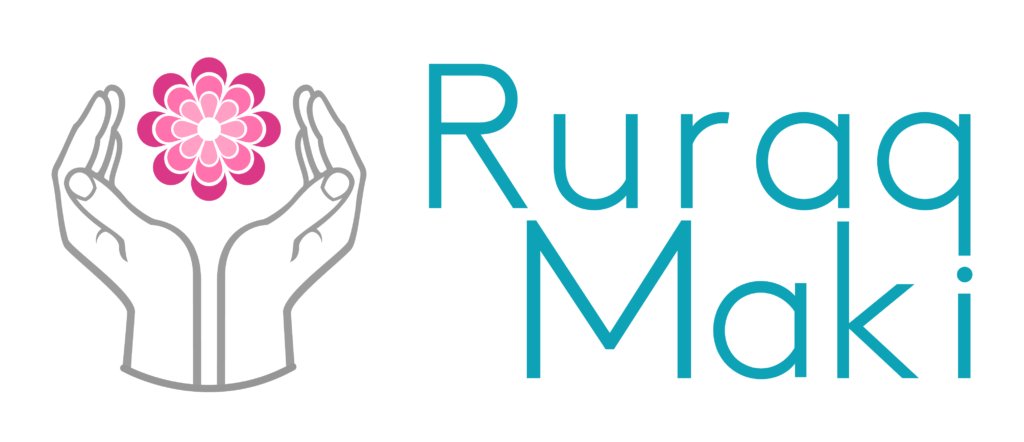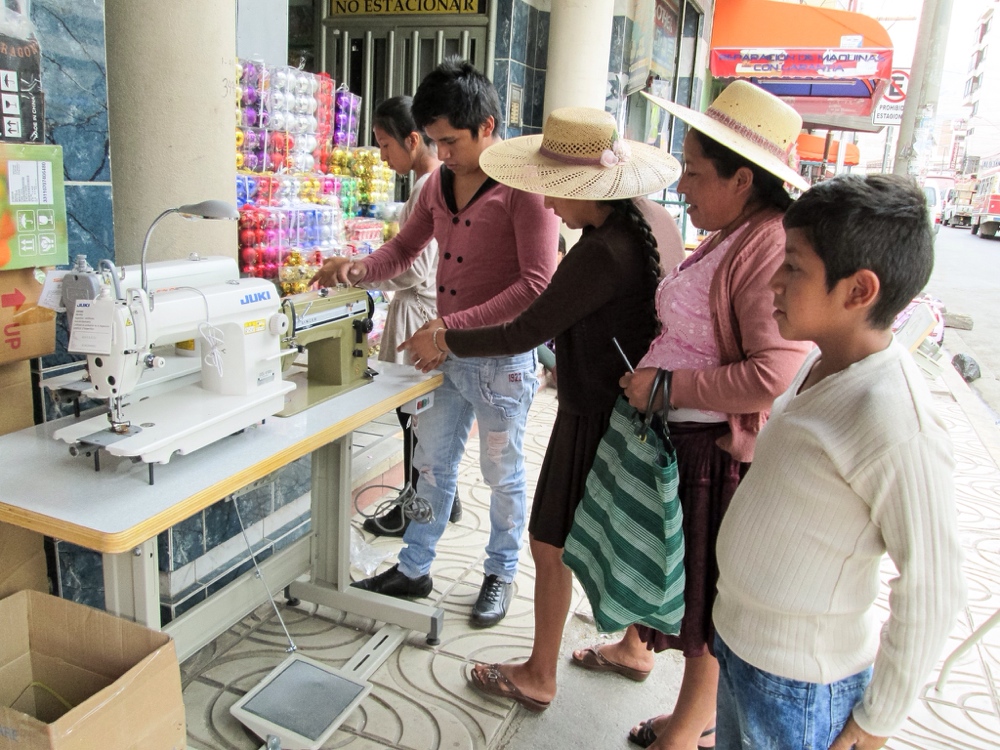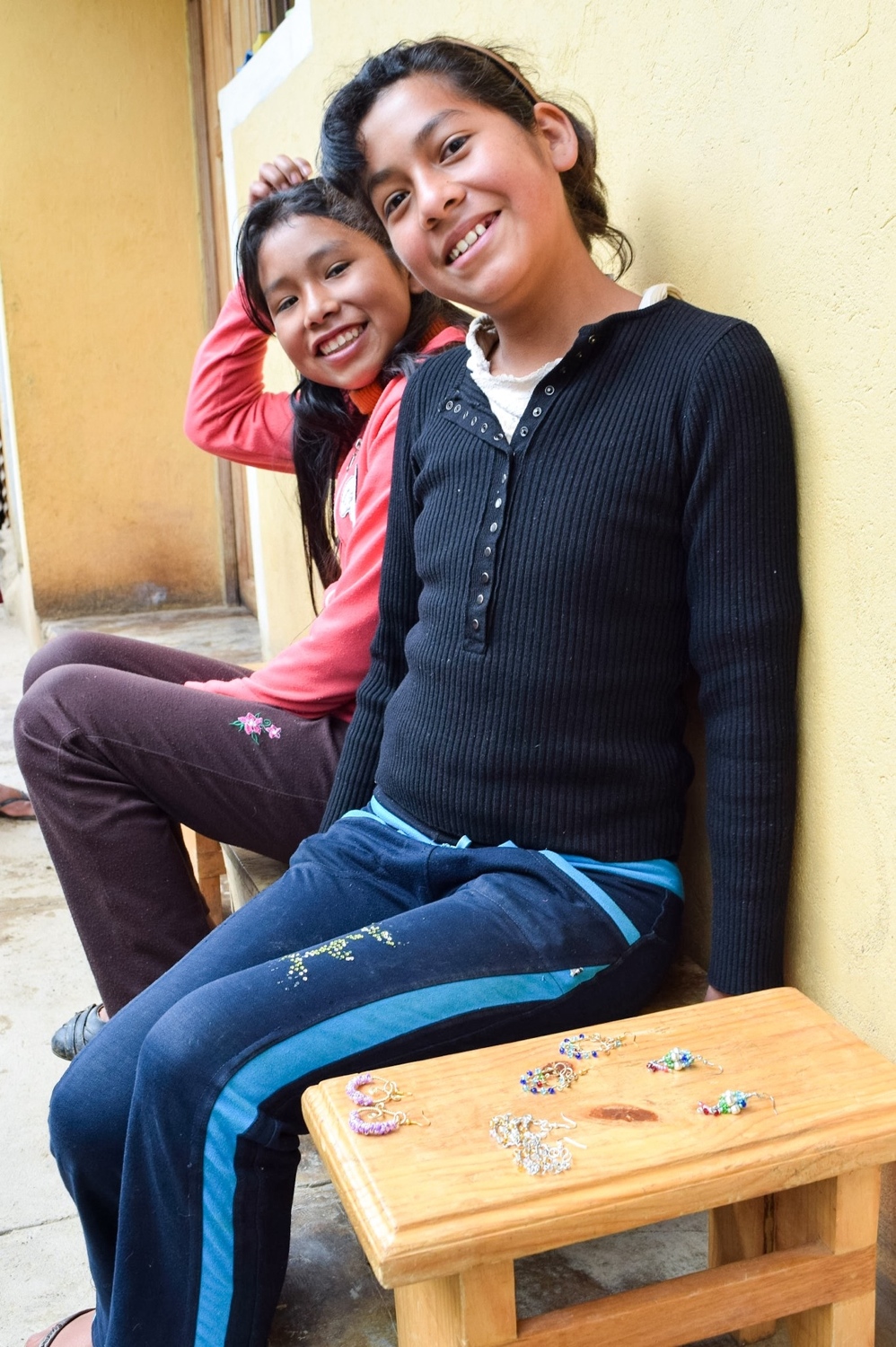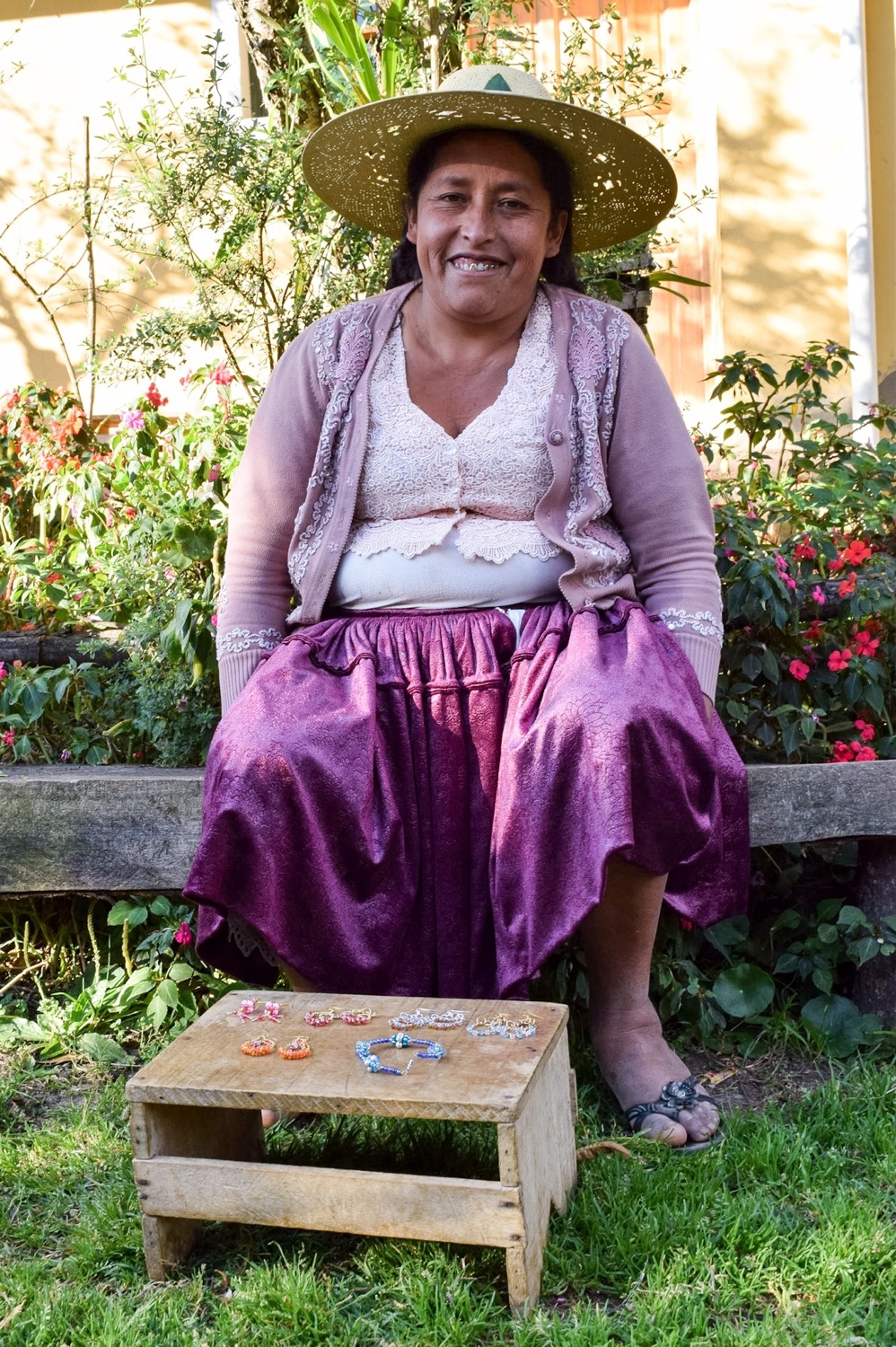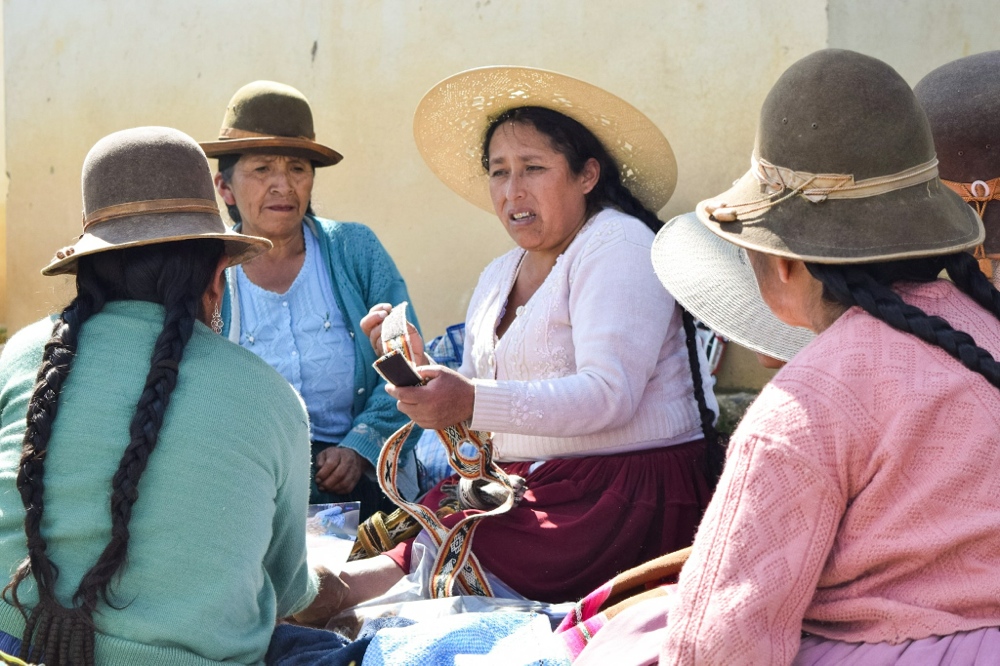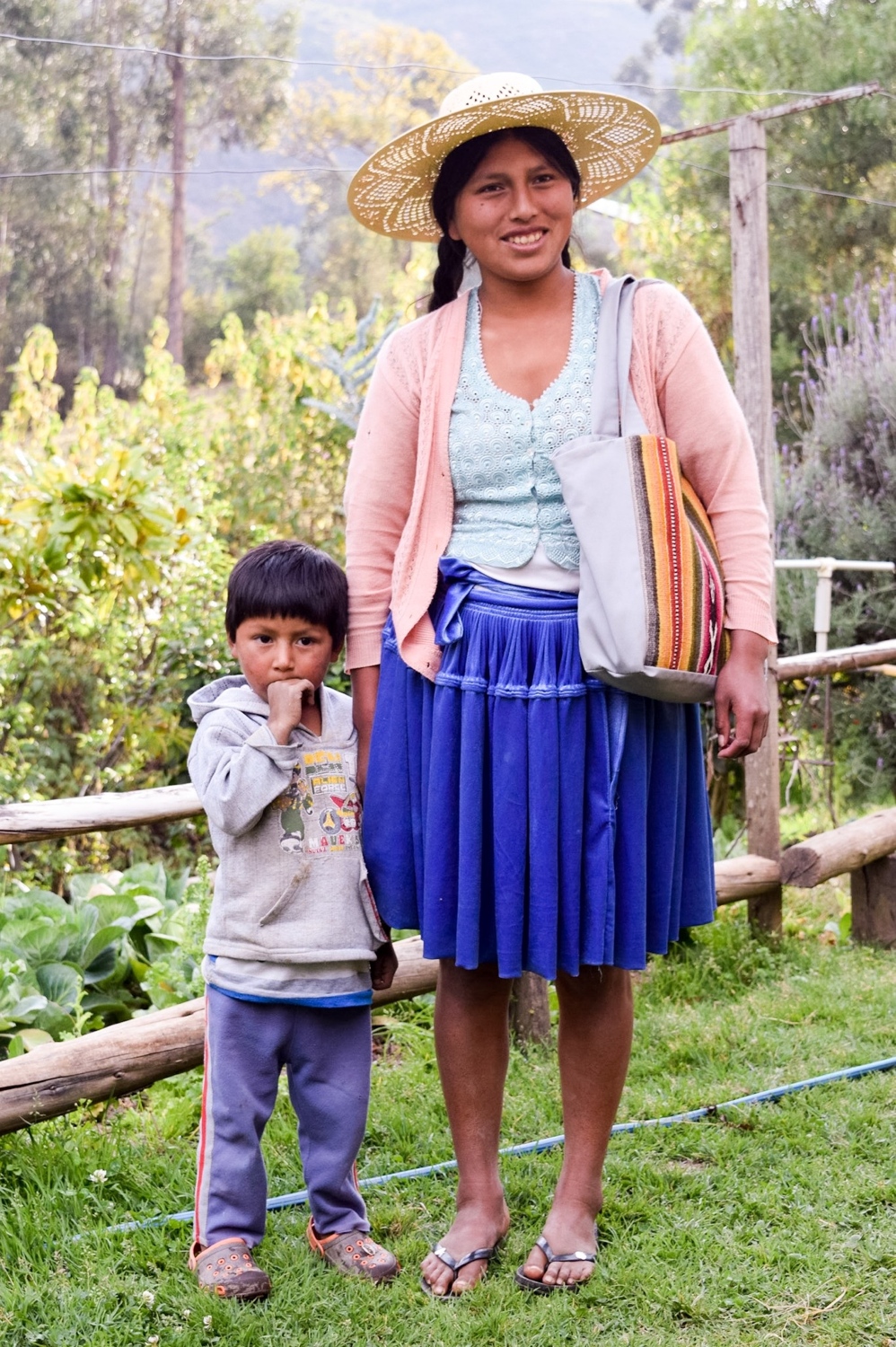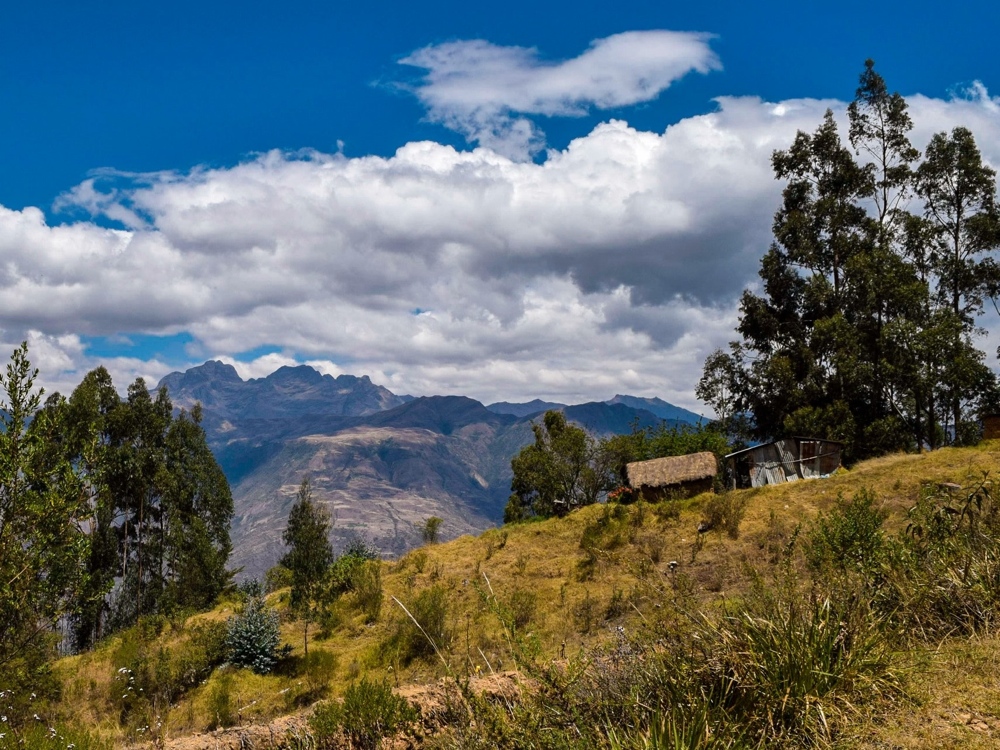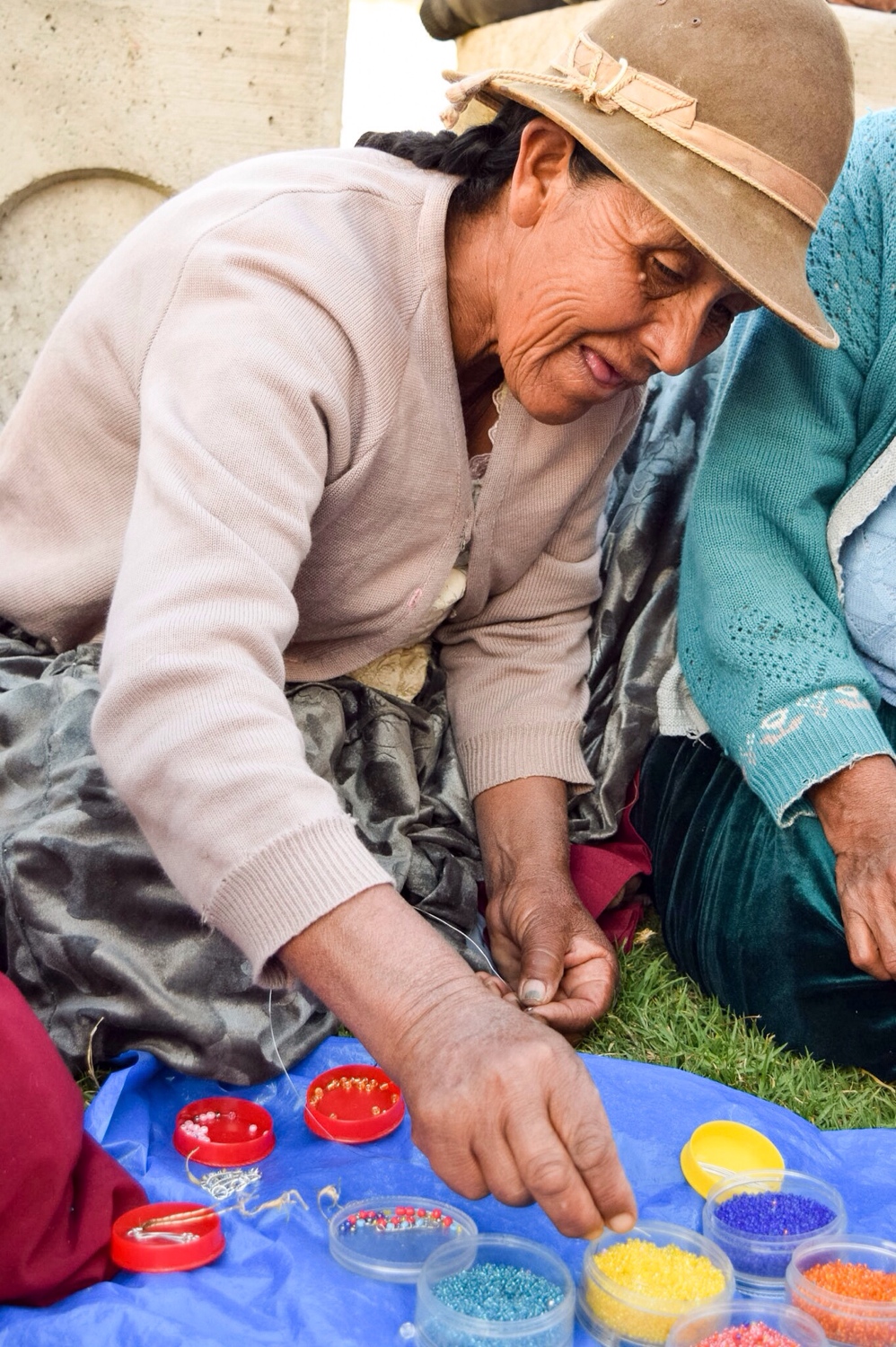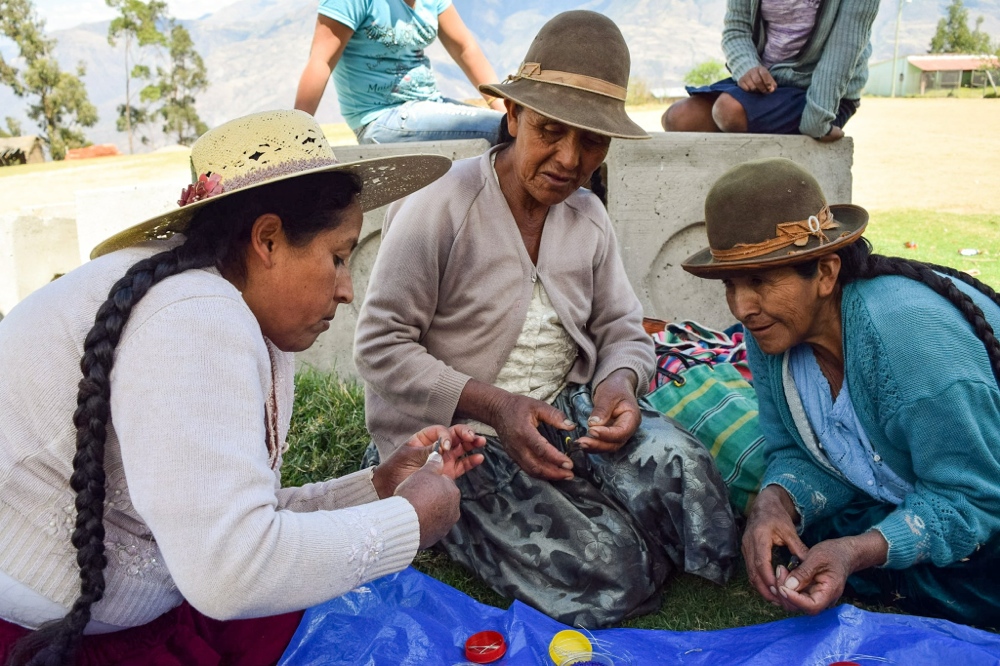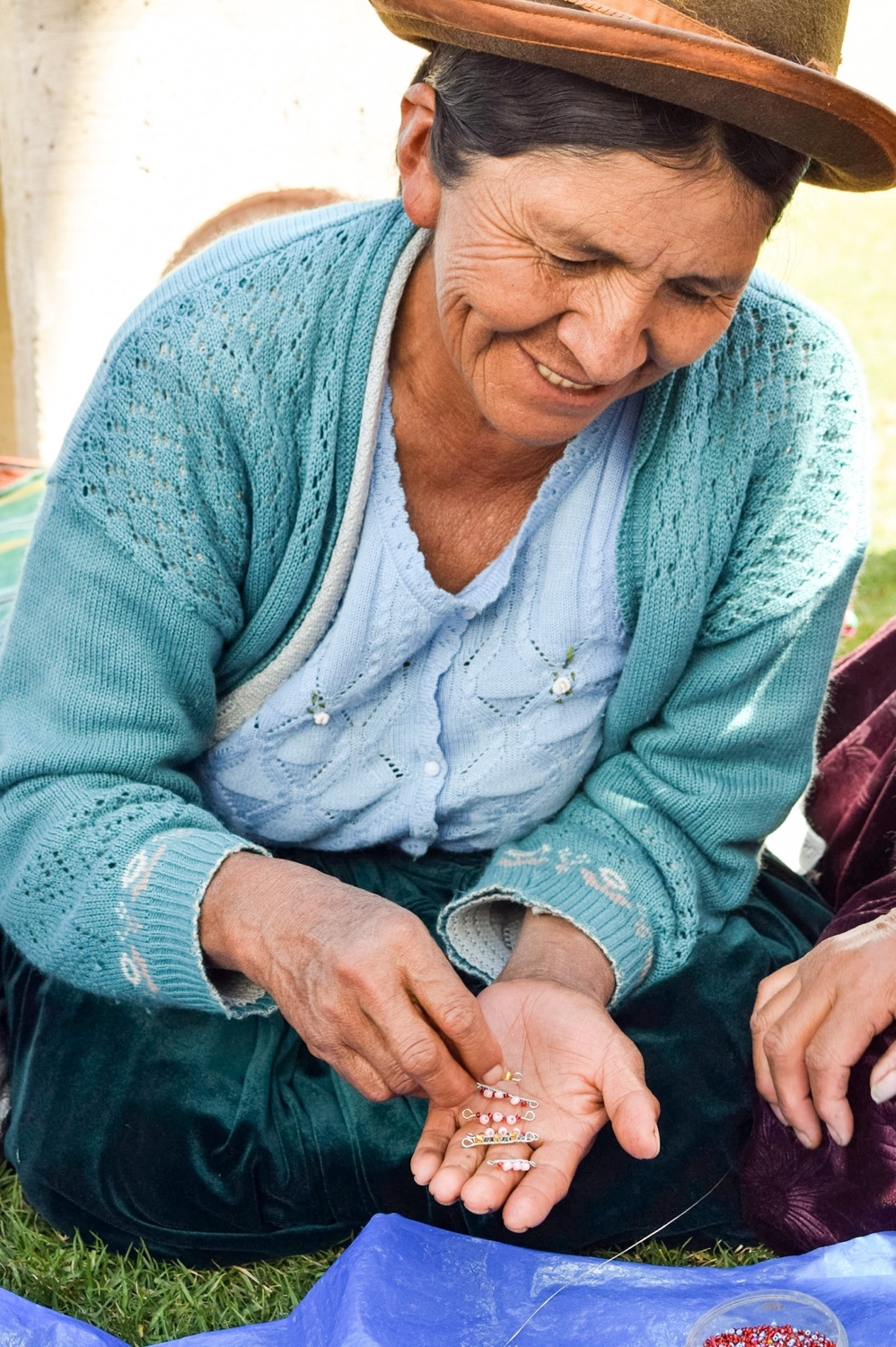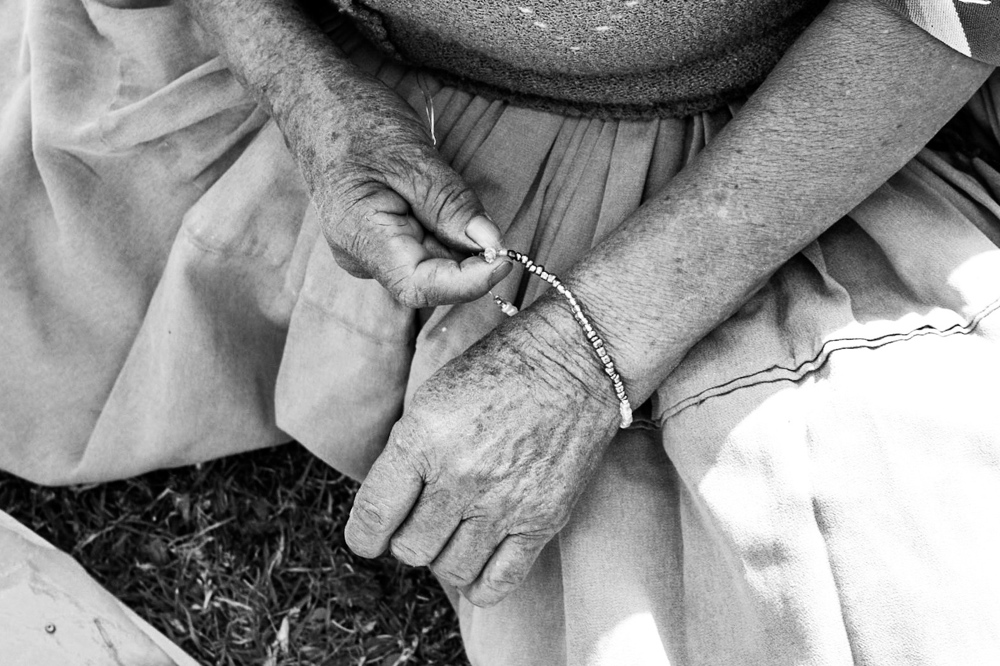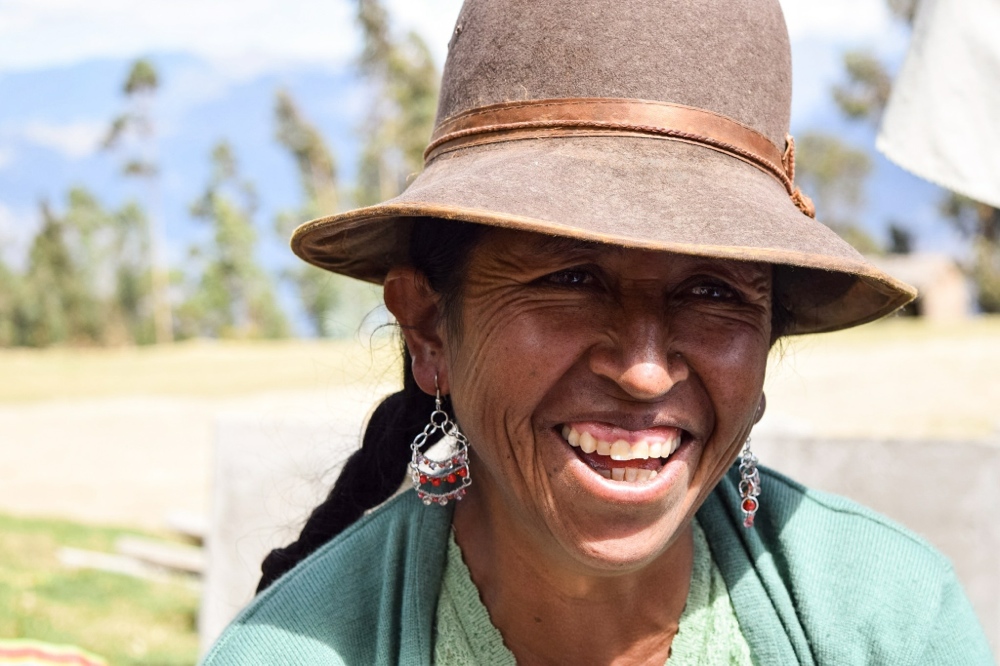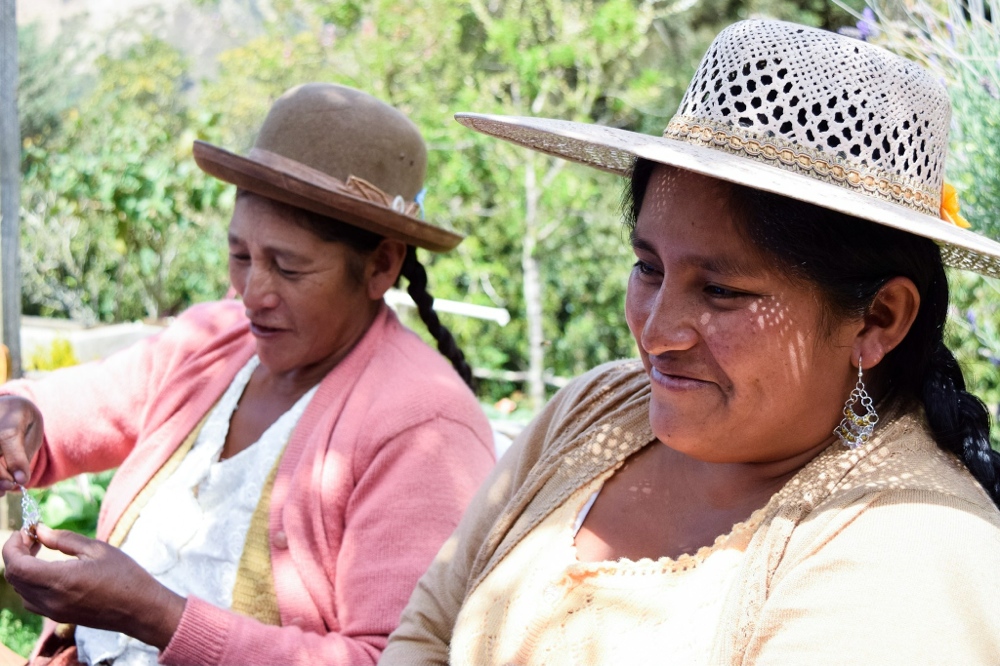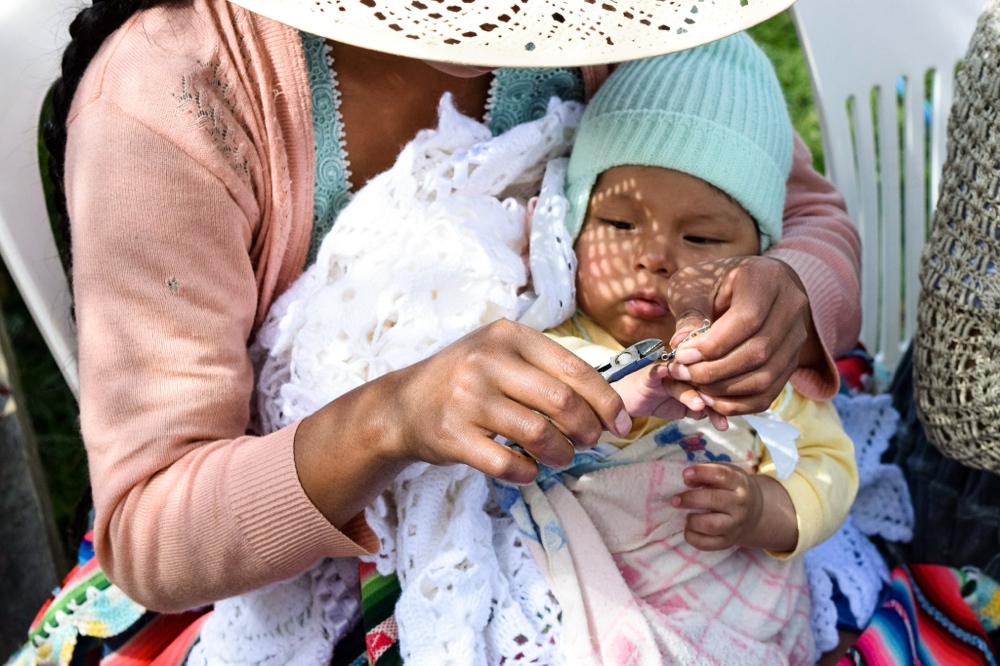Last year, in March, we participated in Patxi’s Pizza’s 52 Weeks of Giving. For one day Patxi’s Pizza Hayes Valley donated 10% of the entire day’s sales to Ruraq Maki and we use the money raised to buy an industrial sewing machine for the women in Independencia.
The main goal of the industrial sewing machine was to give the women greater control over the production process, allowing them to earn more income and increase their production potential. The sewing machine was specifically purchased to handle thick materials, like the weavings and our products, which use khaki and weavings together.
We are so happy to announce that they sewing machine is fulfilling its purpose! Last year, Vilma, a young mother of 4 whose husband has a history of abandoning them (then returning when its convenient) began sewing the yoga mat straps. The yoga mat straps were a fantastic starting point because the construction is simple and acquaints the sewer with working with the weavings. This year, Vilma began sewing the cosmetic cases and she is now adept at sewing both products.
Ruraq Maki’s goal is to have at least 60% of the cost of a product go directly to the women. In Peru this is an easy goal to meet because all of the production, except weaving the manta, is done by the women. In Bolivia, it has been more challenging, as previously the women didn’t sew. This meant that the sewing was out sourced and we had to design with the cost of the sewing in mind. Now, however, the percentage that goes to the women for the cosmetic cases and yoga mat straps has increase greatly (far above the 60%). This is GOOD NEWS!

Sewing the weavings into cosmetic bags
Although we are thrilled that more money is going to the women, the sewing machine’s biggest accomplishment is providing a means of economic independence for women like Vilma. Many rural women have unreliable husbands. Alcoholism, domestic violence, and adultery are common struggles women face. Due to the level of poverty, women must stay with their husbands despite these things, because they simply cannot support their children without a second income. Giving women employment opportunities that are independent from their husbands is key in helping them feel capable of living without them. The goal isn’t to encourage the women to leave their husbands, the goal is to give the women the power of choice.

Dona Max admires the yoga mat strap she wove and her daughter, Vilma, sewed
Our long term goal is to get Vilma, and other women interested in sewing, to the point where they can sew all of Ruraq Maki’s products. Currently, Vilma is the only woman with the skills to do industrial sewing and she cannot sew the more complicated products. In 2016 we plan to sponsor a local trainer from Cochabamba to come to Independencia and teach a 3 days sewing workshop. This workshop would cover fabric cutting, good work space habits, sewing from patterns, sewing more complicated designs, and machine maintenance. We are in the early stages of planning this course, but if you want to see more women empowered like Vilma, please consider making a donation to support the class.
